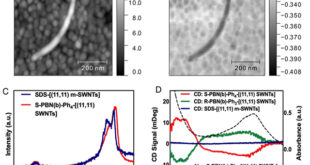Significance Statement
Cadmium is used in many industries such as production of electric batteries, pigments, coatings, and electroplating. However, exposure to cadmium and its water pollution pose a great risk. The World Health Organization has stipulated a maximum contaminant level of 0.003 mgL-1 and National Institute for Occupational Safety and Health designated cadmium as human carcinogen. The toxicity of cadmium depends on solubility in aqueous solution. Cadmium in the free ionic form is easily absorbed and accumulated in organism and may eventually endure toxic reactions. However, in the metallic from, it is insoluble in aqueous solutions, therefore, posing lesser risk.
Cadmium can be introduced into the aquatic ecosystem via practices of chemical industries and agriculture, textile printing, refined petroleum products, and detergents. A number of methods have been explored for cadmium removal. Reverse osmosis, ion exchange, and biological processes, are some of the methods, but have exhibited inadequacies when it comes to affinity and selectivity to minimize residual cadmium concentration to an acceptable level.
Heterogeneous photocatalytic processes are being considered for addressing the issue above. A heterogeneous photocatalytic reaction has the capacity to undertake both reduction and oxidation. Therefore, researchers led by professor Ajay K. Ray at from Western University in Canada presented a study for the photo-reduction of cadmium(II) from aqueous solution into its nontoxic form cadmium (0) implementing a dye-sensitization of titanium oxide. The researchers chose triethanolamine as a sacrificial agent, which has been found to be an effective electron donor. Their research work is now published in Separation and Purification Technology.
The authors sensitized TiO2 in-situ by mixing titanium oxide with Eosin Y in presence of triethanolamine in solution. They performed a set of experiments on adsorption of cadmium(II) on the photocatalyst in the absence of light (dark reaction). Subsequently, Cadmium(II) photo-reduction was accomplished with Eosin Y-sensitized titanium oxide in triethanolamine solution at or above pH7. Below this pH value photo-reduction was not significant. Photocatalyst was irradiated with a solar simulator from the top after which liquid samples were filtered before analysis to determine the concentration of cadmium(II).
The research team observed that when Eosin Y was incorporated on titanium oxide surface, photo-reduction of cadmium(II) was possible under visible light. Eosin Y dye was excited when exposed to the visible-solar radiation and injected electrons to the conduction band of the titanium oxide that eventually reduced cadmium(II) to cadmium(0). The researchers found that various factors including electron donor concentration, light intensity, photocatalyst concentration, and dye concentration greatly influenced photo-reduction efficiency.
The study found approximately 37-100% of cadmium(II) was photo-reduced by the Eosin Y-sensitized titanium oxide photocatalyst for an initial concentration of between 20-100 ppm at a light intensity of 100 mWcm-2.
Reference
Pankaj Chowdhury, Samindika Athapaththu, Ali Elkamel, Ajay K. Ray. Visible-solar-light-driven photo-reduction and removal of cadmium ion with Eosin Y-sensitized TiO2 in aqueous solution of triethanolamine. Separation and Purification Technology, volume 174 (2017), pages 109–115.
Go To Separation and Purification Technology Advances in Engineering Advances in Engineering features breaking research judged by Advances in Engineering advisory team to be of key importance in the Engineering field. Papers are selected from over 10,000 published each week from most peer reviewed journals.
Advances in Engineering Advances in Engineering features breaking research judged by Advances in Engineering advisory team to be of key importance in the Engineering field. Papers are selected from over 10,000 published each week from most peer reviewed journals.


